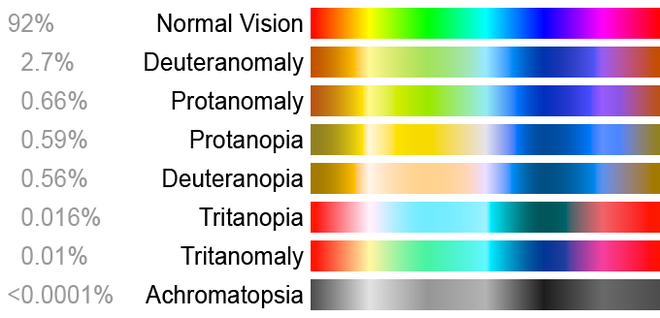I have a red/green color vision deficiency, not the most severe but pretty significant. Those wool colors are hopeless to classify. There's maybe one yellow in the yellow group I would have considered a yellow (but wool doesn't take yellows well, not natural dyes anyway, not the sort of bright sunshiney yellows I enjoy). There's nothing in the red group that I could have confidently put in a group with that label; it's all brown, mud, forest, or greenish/natural colors. There's maybe three greens in the green group I would call confidently; two "traditional" greens and an aqua that I only know belongs in the green group because it was my mother's favorite color and there was
enough discussion of it to know she considered it predominantly green despite it being, technically, a blue-green mix. Blues I believe I would have sorted four into into that group.
Everything else? There is an awful lot of "grey", "brown", and "I dunno what the fuck" which means "I can tell that it's got some color to it but I couldn't tell you which one if you put me in front of a firing squad."
But -- since I gather the whole point of the graphic is that the color blind man who sorted got everything wrong -- I
should point out that there isn't a single color in any grouping that I can point to and confidently say "nope, that's wrong, it's in contradiction to the label." There are maybe three where I'm dubious.
I tried to do that Farnswell-Munsell thing when the thread went by awhile back and it was pointless ... if I am recalling it correctly there were endless swathes of almost indistinguishable blocks that I was being asked to arrange in some sort of hue/shade order, only there was nothing particular to choose between them. They were *different*, but not by enough to sort. Eventually I got bored with generating what was going to be a random-ish result and did not complete the test. If I had been forced by some medical or bureaucratic authority, I am sure it would have revealed considerable color vision deficit, but I am not confident it would have revealed much about the nature of my issues; I simply didn't feel as if the test offered color distinctions sharp enough to let me accurately communicate the visual discriminations I am in fact capable of making.

 2
2











 1
1




 1
1






 5
5








 1
1









 1
1







